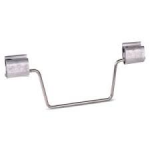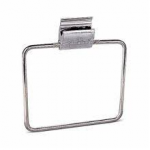You are using an out of date browser. It may not display this or other websites correctly.
You should upgrade or use an alternative browser.
You should upgrade or use an alternative browser.
parallel neutral
- Thread starter domnic
- Start date
- Status
- Not open for further replies.
- Location
- Illinois
- Occupation
- retired electrician
Parallel from where to where?
LarryFine
Master Electrician Electric Contractor Richmond VA
- Location
- Henrico County, VA
- Occupation
- Electrical Contractor
I'm guessing between a meter and a panel? Maybe?
YESI'm guessing between a meter and a panel? Maybe?
mikeames
Senior Member
- Location
- Germantown MD
- Occupation
- Teacher - Master Electrician - 2017 NEC
In reality it would be unnoticed, once installed, but its not legal and with a #6 and a #3 its silly and not smart. Paralleled conductors must be the same size, material, and insulation type. Additionally the minimum size allowed to be paralleled is 1/0 (310.10-H)
Last edited:
LarryFine
Master Electrician Electric Contractor Richmond VA
- Location
- Henrico County, VA
- Occupation
- Electrical Contractor
The "hazard" is that half of the current will flow on the smaller conductor.
Can you give us more detail? Why would the #6 land in both enclosures?
Can you give us more detail? Why would the #6 land in both enclosures?
The inspector rule when you run pvc on a service. (on down run)The "hazard" is that half of the current will flow on the smaller conductor.
Can you give us more detail? Why would the #6 land in both enclosures?
LarryFine
Master Electrician Electric Contractor Richmond VA
- Location
- Henrico County, VA
- Occupation
- Electrical Contractor
He's exactly wrong. To quote myself:The inspector rule when you run pvc on a service. (on down run)
The basics: On the line side of whichever enclosure houses the main disconnect (and ignoring the meter), there is no EGC, there is only the neutral.
The main disconnect is where the premises grounding system begins as separate conductors, and its connection to the service neutral is the main bonding conductor. The grounding electrodes (rod(s), water pipe, building steel, etc.) must also connect to the service neutral at (or before) this point.
Any circuits leaving this enclosure, whether branch circuits or feeders, must include an EGC separate from the neutral (if there is one), and said neutral should never be bonded to ground again. Except for switching, fusing, etc., we treat the neutral as we would any ungrounded (hot) conductor.
- Location
- Illinois
- Occupation
- retired electrician
The 6 AWG will not carry half of the circuit current. The current will divide in inverse proportion to the impedances of the two conductors. While this is a code violation, there is no real world hazard here unless the 3 AWG would become open. The current split will be ~33% on the 6AWG and 68% on the 3AWG.
gar
Senior Member
- Location
- Ann Arbor, Michigan
- Occupation
- EE
200604-1333 EDT
LarryFine:
Your comment in post #6 is very wrong.
Essentially you have two resistors in parallel. One resistor is approximately 1/2 the resistance of the other. Both resistors have the same voltage applied. The power dissipated in the higher resistance is about 1/4 that of the lower resistance.
An approximate rule of thumb is that resistance changes by a factor of about 2 for a change of 3 in wire size.
Power transfer (power dissipation) from a wire is a complex function dependent upon many factors.
As an example the fusing current for copper wire for two sizes is:
#10 1 ohm/1000 ft 333 A.
#16 4 ohm/1000 ft 147 A.
A 4 to 1 resistance change, and a 2.26 ratio of currrents.
Four (4) #16 in parallel would have a fusing currrent of 587 A. Much better than 333 A.
.
LarryFine:
Your comment in post #6 is very wrong.
Essentially you have two resistors in parallel. One resistor is approximately 1/2 the resistance of the other. Both resistors have the same voltage applied. The power dissipated in the higher resistance is about 1/4 that of the lower resistance.
An approximate rule of thumb is that resistance changes by a factor of about 2 for a change of 3 in wire size.
Power transfer (power dissipation) from a wire is a complex function dependent upon many factors.
As an example the fusing current for copper wire for two sizes is:
#10 1 ohm/1000 ft 333 A.
#16 4 ohm/1000 ft 147 A.
A 4 to 1 resistance change, and a 2.26 ratio of currrents.
Four (4) #16 in parallel would have a fusing currrent of 587 A. Much better than 333 A.
.
LarryFine
Master Electrician Electric Contractor Richmond VA
- Location
- Henrico County, VA
- Occupation
- Electrical Contractor
Your theory is spot on, but in my opinion, the actual measured current through 1-foot pieces of #3 and #6 will not divide in the same proportions. An experiment with a clamp-on meter and a substantial load would be in order.Essentially you have two resistors in parallel. One resistor is approximately 1/2 the resistance of the other. Both resistors have the same voltage applied. The power dissipated in the higher resistance is about 1/4 that of the lower resistance.
A friend who is an EE with power-distribution experience once told me that they switched line taps from dual to single crimp because some of the line current diverged through the stirrup:


- Location
- New Jersey
- Occupation
- Journeyman Electrician
Inspector needs a refresher course.The inspector rule when you run pvc on a service. (on down run)
- Location
- Placerville, CA, USA
- Occupation
- Retired PV System Designer
Since both resistors have the same voltage applied the higher resistance will dissipate one half the power of the lower resistance, with one dissipating 1/3 of the total power and the other dissipating 2/3/n
200604-1333 EDT
LarryFine:
Your comment in post #6 is very wrong.
Essentially you have two resistors in parallel. One resistor is approximately 1/2 the resistance of the other. Both resistors have the same voltage applied. The power dissipated in the higher resistance is about 1/4 that of the lower resistance.
...
gar
Senior Member
- Location
- Ann Arbor, Michigan
- Occupation
- EE
200604-1700 EDT
Gold Digger:
You are correct. I guess I was half asleep when I did some form of calculation in my head. I^2*R vs (I/2)^2*R*2. V^2/R vs V^2/(2*R) would have avoided the problem.
However, the fusing current values were from a table in the ITT Reference Data for Radio Engineers 4th Edition handbook, and are probably reasonably correct.
.
Gold Digger:
You are correct. I guess I was half asleep when I did some form of calculation in my head. I^2*R vs (I/2)^2*R*2. V^2/R vs V^2/(2*R) would have avoided the problem.
However, the fusing current values were from a table in the ITT Reference Data for Radio Engineers 4th Edition handbook, and are probably reasonably correct.
.
- Status
- Not open for further replies.

